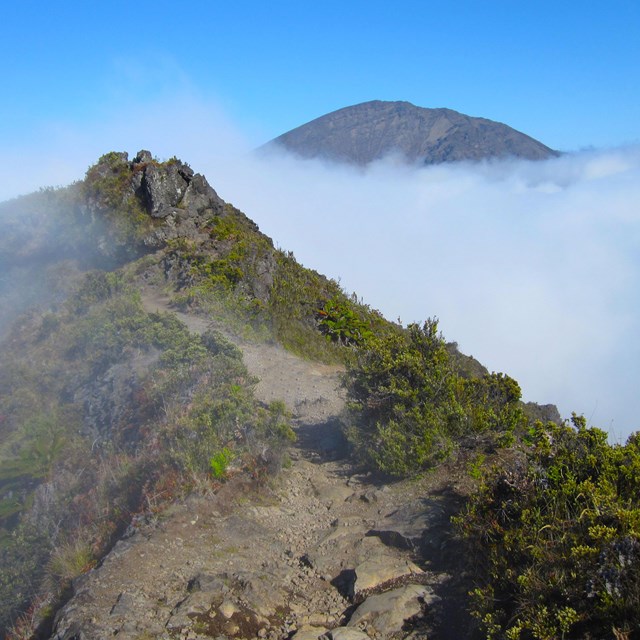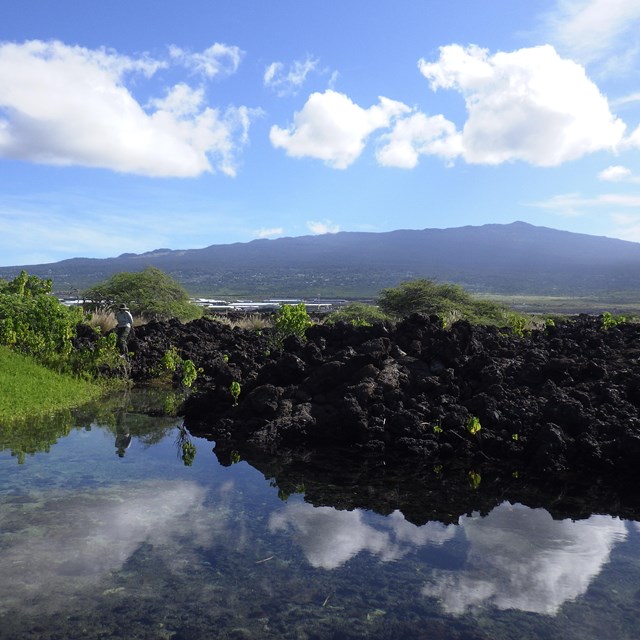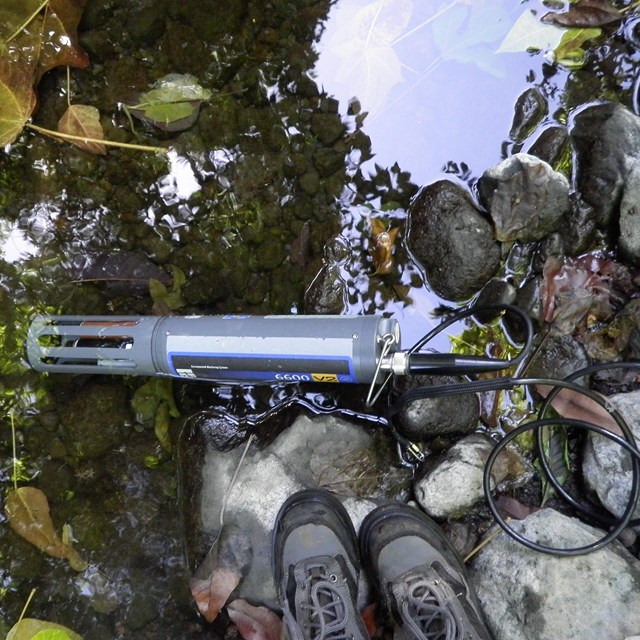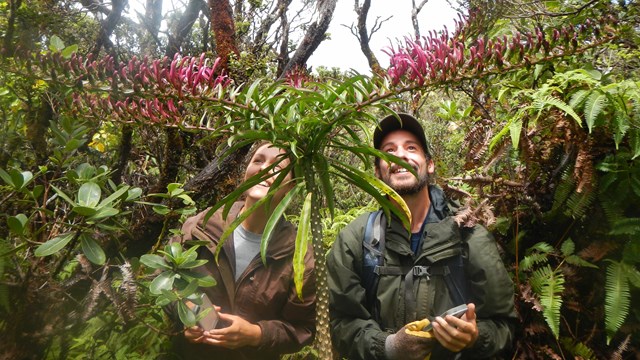In old Hawai‘i, Pu'uhonua o Hōnaunau was considered a sacred place of refuge for the Hawaiian people. Although the landscape has been altered by humans for hundreds of years, Puʻuhonua o Hōnaunau National Historical Park remains a refuge for plant species, birds, bats, and marine life and is home to thousands of archaeological sites and features.
What's Monitored Here
-
 Anchialine Pools
Anchialine PoolsAnchialine pools provide critical habitat for rare invertebrate species including shrimp, snails, and damselflies
-
 Climate
ClimateClimate is widely recognized as a major driver for both terrestrial and marine ecosystems
-
 Landscape Dynamics
Landscape DynamicsLandscape dynamics monitoring in parks provides information on land use and land cover change
-
 Water Quality - Fresh & Brackish
Water Quality - Fresh & BrackishFresh and brackish water quality monitoring occurs in places like streams and anchialine pools

PACN I&M Inventory and Monitoring Reports, Protocols, and Articles from Pu‘uhonua O Hōnaunau National Historical Park

Discovering species in our parks
Last updated: September 12, 2024
